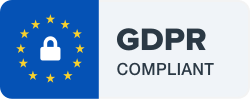In the dynamic world of business, consistency and efficiency are paramount. Yet, achieving these goals can often feel like chasing a mirage in the desert. That's where process documentation swoops in as your trusty compass, guiding you through the labyrinth of tasks and workflows. In this comprehensive guide, we'll delve into the essence of process documentation, its significance, advantages, and provide you with a detailed roadmap to craft impeccable process guides tailored to your business needs.
💡 Tip: To hire the best documentation and SOP software, just click here. All your training, onboarding, documentation and best practices in one place. A single source of truth for your team.– we’ve got it all covered.
What is Process Documentation?
At its core, process documentation serves as the GPS of your business operations, charting out the sequential steps required to accomplish a task or workflow. Whether it's migrating data to the cloud or streamlining customer support procedures, a well-crafted process document elucidates the nitty-gritty details, leaving no room for ambiguity.
Importance of Process Documentation
Why bother documenting processes, you ask? Picture this: your business is a well-oiled machine, humming along smoothly until one day, chaos ensues due to a lack of standardized procedures. Process documentation acts as the guardian angel, ensuring tasks are executed consistently and efficiently, regardless of personnel changes or evolving business landscapes.
Benefits of Process Documentation
Let's uncover the treasure trove of benefits waiting to be unearthed through meticulous process documentation:
- Enhancing Processes: By scrutinizing every nook and cranny of your workflows, you unearth inefficiencies and redundancies, paving the way for optimization and refinement.
- Alleviating Confusion: Bid farewell to the era of perplexity and bewilderment! Clear, well-documented processes eliminate ambiguity, guiding employees like beacons through the darkest of tunnels.
- Knowledge Preservation: Ever fretted about losing a key team member and the invaluable expertise they carry? Fear not! Process documentation immortalizes organizational knowledge, ensuring a seamless transition even in their absence.
- Facilitating Analysis: Armed with concrete records of past and present processes, you embark on a journey of continuous improvement, discerning what works, what doesn't, and what can be revamped for greater efficacy.
Different Methods of Process Documentation
From ancient scrolls (figuratively speaking) to cutting-edge software solutions, the canvas for process documentation is vast and varied. Explore these diverse methods and find the perfect fit for your business:
- Written Documents: The timeless classic, akin to the protagonist in a literary saga, narrating the tale of your processes with eloquence and precision.
- Templates: Like building blocks in a Lego set, templates provide a framework, simplifying the process of documentation while maintaining consistency.
- Automated Software Solutions: Welcome to the future! Harness the power of technology with automated software solutions, streamlining the process documentation process and unleashing untapped potential.
- Integrated Approaches: Why settle for one when you can have it all? Integrate process documentation seamlessly into your productivity and project management ecosystem, creating a harmonious symphony of efficiency.
How to Document a Process: A Step-by-Step Guide
Embark on a journey of process documentation enlightenment with these seven pivotal steps:
- Identify the Process: Every adventure begins with a clear destination. Identify the process you intend to document, giving it a name and a crystal-clear objective.
- Place Boundaries: Erect signposts at the beginning and end of your journey. Define what triggers the start of the process and how you'll know when it reaches its conclusion.
- List the Expected Result: Envision the pot of gold at the end of the rainbow. Define the expected outcome of the process, setting the stage for success.
- Detail the Inputs: Equip yourself with the necessary tools and resources for the expedition ahead. Document the materials and equipment required to traverse the terrain of your process.
- Walk Through the Process: Don your explorer's hat and embark on a journey of discovery. Walk through the process from start to finish, experiencing every twist and turn firsthand.
- Determine Who is Involved: Identify your fellow adventurers and allies on this quest. List the individuals involved in executing the process, ensuring no one is left behind.
- Utilize Your Process Documentation System: Assemble your findings into a cohesive narrative, meticulously documenting each step and detail. Review and refine, ensuring completeness and accuracy.
Get started with Waybook Free AI SOP Generator. Share your requirements, and we'll craft tailored documents for you.
Efficient documentation is crucial in business, providing clear guidance for employees to work safely and effectively. However, creating documents, policies and SOPs can be time-consuming, especially when your organization has numerous roles. It can also be challenging without prior expertise.
Now you can do that free and instantly with Waybook Free AI SOP Generator. It swiftly generates comprehensive documents with simple commands. To generate your documents now, just click here.
In a nutshell
In the grand tapestry of business operations, process documentation emerges as the unsung hero, weaving together threads of efficiency and consistency. Embrace the power of documentation, and watch as your business scales new heights of success. Remember, the journey of a thousand miles begins with a single document—start documenting your processes today and chart a course towards greatness!








